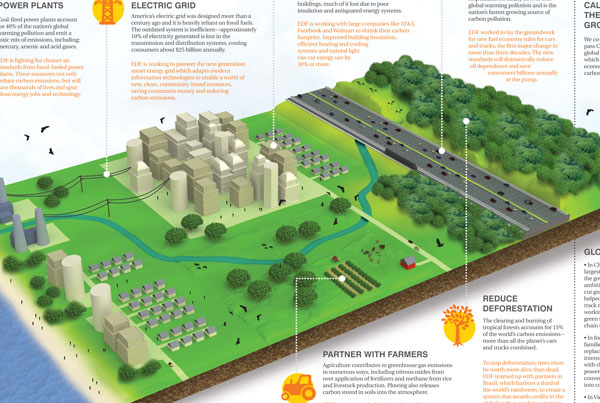

21 For example, land use and land cover changes, in parallel with temperature increase, may contribute to the spread of leishmaniasis by moderating vector activity. 20 Increasingly widespread disruption of landscapes and biodiversity, through deforestation and agricultural development, changes socio-ecological systems and forces humans, vectors, livestock, and pathogens into increasingly closer contact. 19 Zoonotic disease spillover is determined by interactions between humans and natural systems. Over two thirds of human infectious diseases are zoonotic, causing widespread morbidity and mortality.
#Climate change infographic 2105 drivers
In addition, interactions between climate change and other infectious disease drivers seem to be accelerating. 17 18 A precautionary approach would argue for more research, at a minimum, to settle any remaining doubts.

Third, insufficient attention has been paid to the effects of increasingly frequent and severe extreme weather events, which have a known association with infectious disease outbreaks. 16 Second, there is limited research on the role of interannual climate variability, which is important for many infectious diseases with a marked seasonal component. Some areas that have experienced substantial shifts in climate (such as areas of Africa and the Middle East) are under-represented in the evidence base, which limits conclusions about climatic influences in certain regions. First, our evidentiary database is incomplete.
#Climate change infographic 2105 driver
Ruling out climate change as a key driver of infectious disease risk is premature, however, for several reasons. 14 In recent years, the world has seen substantial declines in many prevalent infectious diseases, including malaria, yellow fever, lymphatic filariasis, schistosomiasis, onchocerciasis, Chagas disease, and African trypanosomiasis, 15 indicating that other drivers have obscured any climate change contribution to disease incidence.

The relative importance of climate variability and change has been difficult to evaluate among drivers of disease incidence such as globalization, urbanization, migration, land use changes, poverty, vector-pathogen characteristics, and control measures. 12 13 But evidence of major impacts of climate change on communicable disease has been somewhat limited. 9 The rationale for an association between climate change and infectious disease is clear, and mosquito-borne pathogens, particularly malaria and dengue, are of particular concern 10 11 given established climate sensitivities of vector populations. This is partly because the evidence is difficult to parse. Funding for training, research, and practice related to climate change and infectious disease has been limited accordingly. Climate change remains a vanishingly small element of the portfolio of funders like the European Commission and the Wellcome Trust that have stepped into the breach. The world’s largest global health funders, including the US National Institutes of Health (NIH) 8 and the Bill and Melinda Gates Foundation (BMGF), still lack specific climate and health programming, let alone programming focused on climate change and infectious diseases. The global health response has largely been characterized by scepticism and watchful inaction. 2 For at least two decades, global assessments have highlighted the need to reduce greenhouse gas emissions 3 4 and to invest more substantially in climate and health, including surveillance, preparedness, and response. 1 Impacts on infectious disease are a particular concern: there is growing evidence that some of the greatest health impacts of climate change are, and will continue to be, on the emergence, re-emergence, and spread of infectious diseases. Global health leaders have identified climate change as the greatest health challenge of the 21st century.


 0 kommentar(er)
0 kommentar(er)
